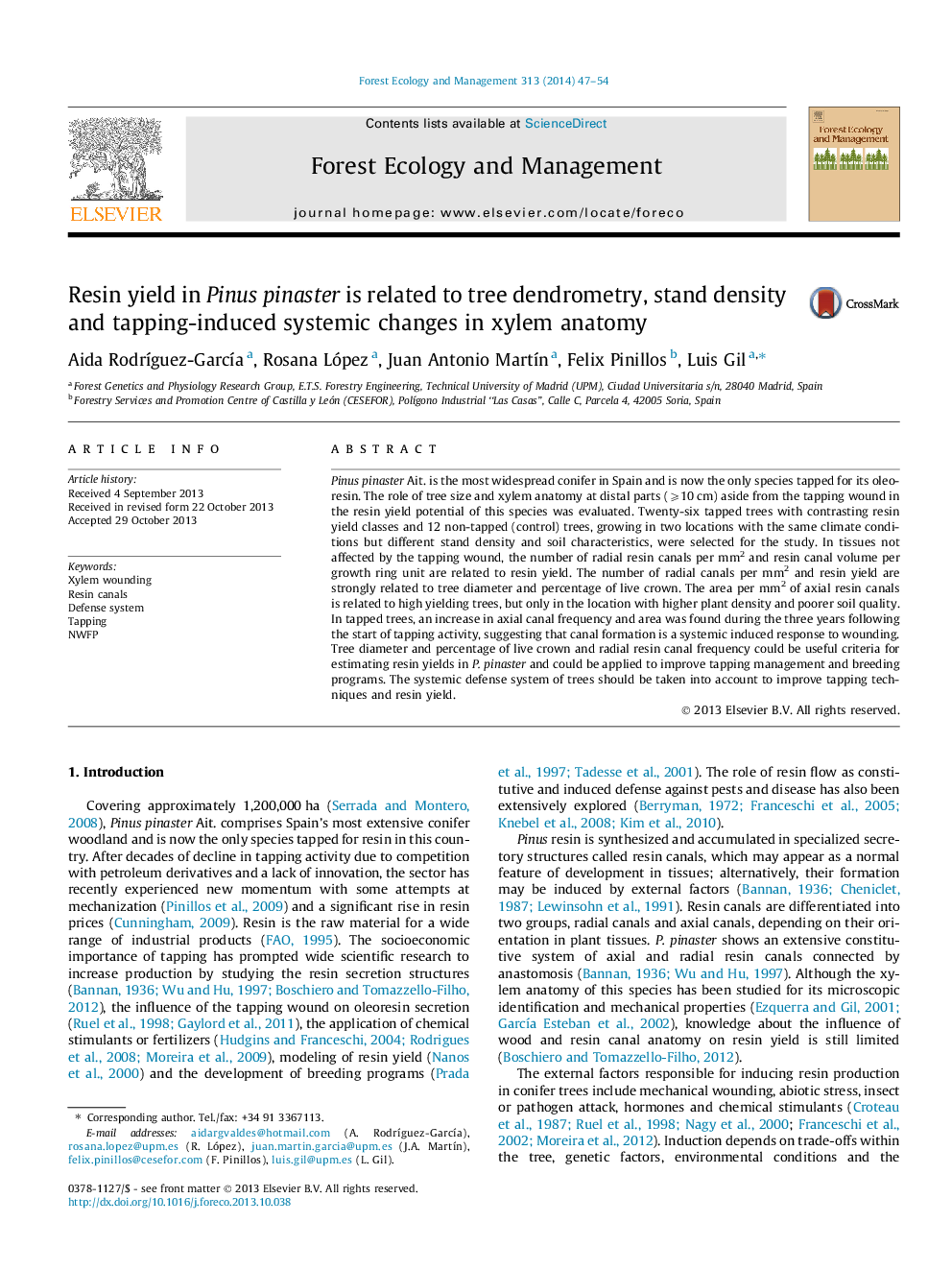| کد مقاله | کد نشریه | سال انتشار | مقاله انگلیسی | نسخه تمام متن |
|---|---|---|---|---|
| 86578 | 159199 | 2014 | 8 صفحه PDF | دانلود رایگان |

• We evaluated the role of dendrometry and xylem anatomy in tree resin yield potential.
• Resin yield was strongly influenced by tree diameter and percentage of live crown.
• Radial resin canal frequency and total volume of canals were related to resin yield.
• In tapped trees, a systemic response in axial canal frequency was identified.
• Stand density and soil quality affected resin yield and xylem anatomy.
Pinus pinaster Ait. is the most widespread conifer in Spain and is now the only species tapped for its oleoresin. The role of tree size and xylem anatomy at distal parts (⩾10 cm) aside from the tapping wound in the resin yield potential of this species was evaluated. Twenty-six tapped trees with contrasting resin yield classes and 12 non-tapped (control) trees, growing in two locations with the same climate conditions but different stand density and soil characteristics, were selected for the study. In tissues not affected by the tapping wound, the number of radial resin canals per mm2 and resin canal volume per growth ring unit are related to resin yield. The number of radial canals per mm2 and resin yield are strongly related to tree diameter and percentage of live crown. The area per mm2 of axial resin canals is related to high yielding trees, but only in the location with higher plant density and poorer soil quality. In tapped trees, an increase in axial canal frequency and area was found during the three years following the start of tapping activity, suggesting that canal formation is a systemic induced response to wounding. Tree diameter and percentage of live crown and radial resin canal frequency could be useful criteria for estimating resin yields in P. pinaster and could be applied to improve tapping management and breeding programs. The systemic defense system of trees should be taken into account to improve tapping techniques and resin yield.
Journal: Forest Ecology and Management - Volume 313, 1 February 2014, Pages 47–54